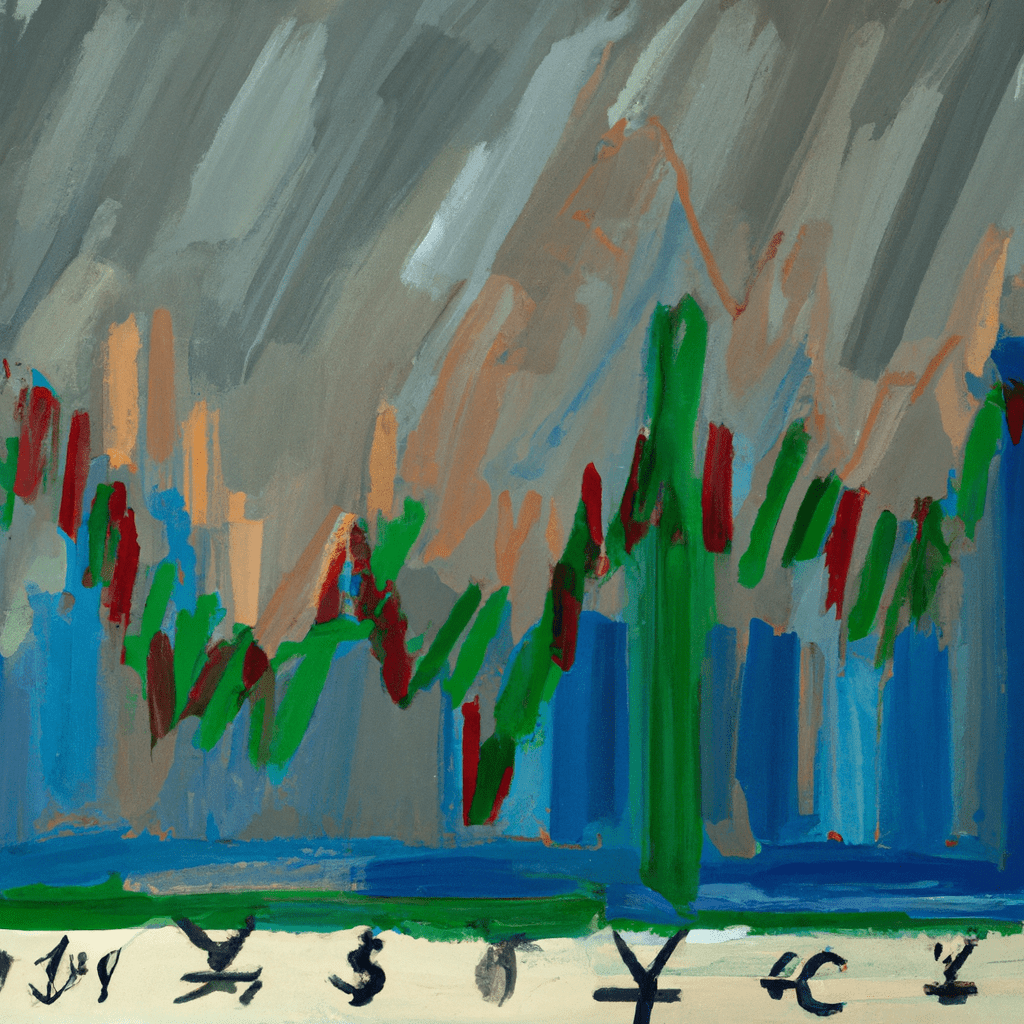In today's fast-paced and interconnected world, forex trading has emerged as a popular investment option for individuals looking to capitalize on the volatility of global currency markets. With its potential for high returns and round-the-clock trading opportunities, forex trading has attracted both seasoned investors and newcomers alike. This article will serve as a comprehensive guide, covering the basics of forex trading and spread-betting, the use of FX signals and forex tools for successful trading, and the opportunities and risks associated with CFD trading in the FX markets. Whether you are a novice trader or an experienced investor, this article aims to equip you with the knowledge and insights needed to navigate the dynamic world of forex trading.
1. "Understanding the Basics of Forex Trading and Spread-Betting"

Understanding the Basics of Forex Trading and Spread-Betting
Forex trading, also known as foreign exchange trading, is the process of buying and selling currencies in the global marketplace. It is a decentralized market where participants can trade currencies directly or through intermediaries. Spread-betting, on the other hand, is a type of derivative trading that allows individuals to bet on the price movements of various financial instruments, including forex.
Forex trading involves the simultaneous buying of one currency and selling of another. The value of currencies is determined by various factors such as economic indicators, geopolitical events, and market sentiment. Traders aim to profit from the fluctuations in currency prices by speculating on whether a particular currency will appreciate or depreciate against another.
Spread-betting, on the other hand, does not involve the physical exchange of currencies. Instead, traders place bets on the direction in which they think the price of a currency pair will move. They profit or incur losses based on the accuracy of their predictions. Spread-betting allows traders to take advantage of both rising and falling markets, offering opportunities for profit in any market condition.
To engage in forex trading and spread-betting, traders can utilize various tools and resources. Forex signals, for example, are indicators or recommendations that provide insights into potential trading opportunities. These signals can be generated by experienced traders or automated systems and can help traders make informed decisions.
Additionally, forex tools such as charts and technical analysis indicators are essential for analyzing market trends and patterns. These tools enable traders to identify potential entry and exit points, set stop-loss levels, and manage risk effectively. By utilizing these tools, traders can enhance their understanding of the market and make more informed trading decisions.
It is important to note that forex trading and spread-betting also involve risks. The forex market is highly volatile, and prices can fluctuate rapidly, leading to potential losses. Traders should carefully consider their risk tolerance and develop a trading strategy that aligns with their financial goals.
In conclusion, understanding the basics of forex trading and spread-betting is crucial for anyone looking to participate in these markets. By familiarizing themselves with the concepts, tools, and risks involved, traders can increase their chances of success in the competitive world of forex and spread-betting.
2. “Utilizing FX Signals and Forex Tools for Successful Forex Trading”

Utilizing FX Signals and Forex Tools for Successful Forex Trading
In the fast-paced world of forex trading, staying ahead of the game is crucial. Traders constantly seek ways to gain an edge and maximize their profits. This is where the use of FX signals and forex tools comes into play.
FX signals, also known as forex signals, are alerts or notifications that provide traders with crucial information about potential trading opportunities. These signals are generated by experienced analysts or automated systems, and they indicate when to enter or exit a trade based on various technical and fundamental factors. By subscribing to a reliable FX signals service, traders can receive real-time updates and valuable insights, helping them make informed trading decisions.
Forex tools, on the other hand, encompass a wide range of resources designed to assist traders in their forex trading activities. These tools include charts, indicators, calculators, and software programs that provide advanced analysis and market data. By utilizing these tools, traders can gain a deeper understanding of market trends, identify profitable entry and exit points, and manage their risk effectively.
One of the key advantages of using FX signals and forex tools is the ability to save time and effort. With the vast amount of information available in the forex market, manually analyzing charts and staying updated with market news can be overwhelming. FX signals simplify the process by providing ready-to-use trade ideas, while forex tools automate complex calculations and analysis, allowing traders to focus on executing their trades.
Furthermore, FX signals and forex tools can be particularly beneficial for beginners who lack extensive trading experience. These resources act as a valuable learning tool, helping novice traders understand market dynamics, study successful trading strategies, and gain confidence in their decision-making. By following reliable FX signals and utilizing forex tools, beginners can gradually develop their trading skills and increase their chances of success.
It is worth noting that while FX signals and forex tools can be powerful aids, they should not be solely relied upon. Successful forex trading requires a comprehensive approach that combines these resources with a sound trading strategy, risk management techniques, and continuous learning. Traders should always exercise their own judgment and conduct thorough research before making any trading decisions.
In conclusion, utilizing FX signals and forex tools can greatly enhance a trader's chances of success in the forex market. These resources provide valuable insights, save time, and assist in making informed trading decisions. Whether you are a beginner or an experienced trader, incorporating FX signals and forex tools into your trading routine can help you stay ahead in the dynamic world of forex trading.
3. “Exploring the Opportunities and Risks of CFD Trading in FX Markets”

When it comes to forex trading, one popular method that traders often venture into is CFD trading in the FX markets. CFD stands for Contract for Difference, which is a financial derivative that allows investors to speculate on the price movements of various financial instruments, including forex pairs.
One of the main advantages of CFD trading in the forex market is the ability to trade on margin. This means that traders can control a larger position with a smaller amount of capital, amplifying potential profits. Additionally, CFDs offer the opportunity to profit from both rising and falling markets, as traders can take both long and short positions.
Another advantage of CFD trading in the FX markets is the availability of leverage. Leverage allows traders to multiply their exposure to the market, potentially increasing profits. However, it is crucial to understand that leverage can also magnify losses, making risk management a vital aspect of CFD trading.
Furthermore, CFD trading provides access to a wide range of forex pairs, allowing traders to diversify their portfolios and take advantage of various market opportunities. This diversity ensures that traders can explore different currency pairs and potentially find more favorable trading conditions.
Despite the opportunities presented by CFD trading, it is essential to be aware of the associated risks. One significant risk is the potential for substantial losses. Since leverage is involved, even a small adverse market movement can result in significant losses. Traders must carefully consider their risk tolerance and implement risk management strategies, such as setting stop-loss orders.
Additionally, CFD trading in the forex market requires staying informed about market trends, news, and economic data. Traders should utilize forex tools, charts, and FX signals to make informed trading decisions. These resources can provide valuable insights into market movements and help traders navigate the complexities of the FX markets.
In conclusion, CFD trading in the FX markets offers both opportunities and risks for forex traders. With the ability to trade on margin, access leverage, and diversify portfolios, traders can potentially amplify their profits. However, it is crucial to manage risks effectively and stay informed about market trends. By utilizing forex tools, charts, and FX signals, traders can enhance their trading strategies and make informed decisions in the dynamic world of forex trading.
In conclusion, forex trading and spread-betting offer individuals the opportunity to participate in the global currency markets and potentially generate profits. By understanding the basics of forex trading and utilizing forex tools, such as FX signals and charts, traders can improve their chances of success. However, it is important to acknowledge the risks associated with CFD trading in FX markets and to approach it with caution. Overall, with proper knowledge, strategy, and risk management, forex trading can be a lucrative endeavor for those willing to put in the time and effort. Whether you are a beginner or an experienced trader, staying informed and adapting to market trends is key to achieving long-term success in the forex trading arena.





